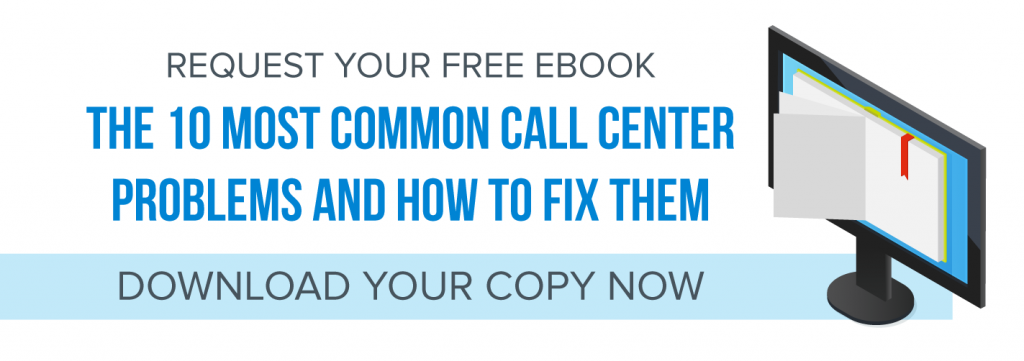You can trace most call center problems to the position call centers hold in the customer service world: they’re the front lines, the trenches.
As a call center manager, you face challenges from every side—your employees, the customers who call in, call centers’ flat career structure, and even your technology. We’ll address the four most common problems faced by call centers, and offer some fixes for them.
#1. Attrition
When you lose an employee, you lose all the time, effort, and training that went into that person. And in an industry where employee turnover is particularly high (between 30 to 45 percent compared to the U.S. average of 15.1 percent), that cost starts to hurt your bottom line.
Here are a few ways to reduce your call center turnover rate:
- More selective hiring. Look for candidates who have shown longevity and loyalty to past employers.
- Offer competitive pay and rewards. You get what you pay for, and sometimes even a modest raise in starting pay can yield a more reliable, productive grade of employee.
- Provide necessary tools. Give your employees the software tools they need to excel at their job, like multiple communication channels, call analytics, computer telephony integration (CTI), interactive voice response (IVR), call recording, and call monitoring.
#2. First call resolution
According to US customer surveys, 20 to 30 percent of your call center’s call volumes are call backs from customers with unresolved concerns. But as customer concerns become more complex, it gets harder to find a solution without multiple touch points. That’s why you should:
- Build a common knowledge base. Record common questions and populate them with approved responses.
- Engage in root-cause analysis. Identify the top reasons for why customers call into your call center. Use that information to populate your knowledge base.
- Assess key performance indicators (KPIs). Constantly evaluate the metrics you’re gathering and determine whether they’re providing the insights you need to improve your customer service.
#3. Improve performance
There’s always room for improvement, and your best-performing employees will be on the lookout for ways to advance their skills and careers. Unfortunately, most contact centers have flat structures with little upward mobility. In fact, less than a third of call centers have an established career develop path for their employees. A lack of career opportunities can lead to lost motivation and declining performance among staff members. You can avoid this by:
- Managing expectations. Be upfront about what opportunities exist in your organization—or may exist later on. If you don’t see any opportunities arising in the immediate future, be honest about that.
- Look for opportunities. Give high-performing employees a chance to head up a new initiative or tackle a project. Offering them responsibilities gives them a chance to acquire skills and experience that may benefit them later.
- Focus on the right metrics. Evaluating staff performance and identifying areas of improvement may require looking beyond quantitative numbers. Try gaining additional insights from qualitative metrics, like net promoter scores and real-time feedback.
#4. Integration
Much of your day-to-day operations rely on multiple software applications. This means your employees are constantly switching between multiple databases. This becomes a problem when 60% of failed first-call resolutions are because of an employee’s inability to access data. Don’t let your employees fly blind or leave them juggling multiple tools. You can help them if you:
- Adopt software that integrates with existing call center applications. Newer software often comes with options to integrate with the tools you’re already using.
- Pick platforms that feature multiple systems integrations. Look for services that advertise integration with CRMs, sales order processing, and automated voice response systems.
- Look for vendors that consolidate their tools into one system. A range of integrated tools is easier to manage, especially when you have a customer on the phone and every second counts.
More Call Center Problems and Solutions
Of course these four issues aren’t the only troubles call centers face. Check out our ebook below to learn about other call center problems and how to handle them.







